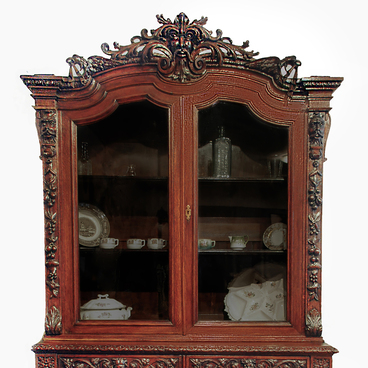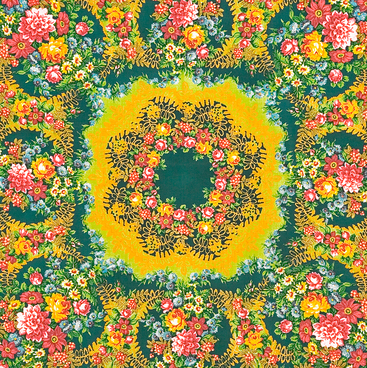The screen “Governors of the town of Glupov” based on “The History of a Town” by Mikhail Saltykov-Shchedrin was created for the collection of the Museum of Folk Crafts as an exhibit. The establishment of this museum in the 1930s became one of the largest projects of the Soviet state in the field of folk art.
By its scale, the beauty of the painting, color scheme, and elaborate details, the screen surpasses many other works of Gorodets painting. It was painted in Moscow by artists Ignaty Lebedev and Dmitry Kryukov who were invited as part of the museum’s experimental work with folk masters. This screen was the first work based on a literary topic in the history of the craft.
The choice of the satirist’s work was obviously due not only to the capabilities of Gorodets painting, but also to the growing popularity of Saltykov-Shchedrin’s books. The screen includes eleven panels. Each panel features a composition that depicts one of the governors of the provincial town of Glupov. The scenes illustrating the book were painted by Lebedev, and the ornaments with flowers, animals and birds — by Kryukov.
One scene is dedicated to one of the governors, state councilor Erast Grustilov, under whom the town was mired in vulgarity and laziness. He believed that it was not necessary to work to ensure the prosperity of Glupov, that it would come when all residents go “to the All-Night Vigil service”, and the main people in the town would be the poor and the fools.
Another composition presents Lieutenant Colonel Prysh (Pimple), whose head was stuffed with truffles. Amazing smells emanated from it, and the ruler lost his head: a representative of the local nobility ate it. But, as Mikhail Saltykov-Shchedrin wrote, “no one guessed that thanks to this circumstance the city was in such prosperity, which the chronicles had not recorded since its foundation”. Ivan Turgenev called it a remarkable book and believed that it reflected “the satirical history of Russian society in the second half of the last and the beginning of this century” (that is, the 18th and 19th centuries).
By its scale, the beauty of the painting, color scheme, and elaborate details, the screen surpasses many other works of Gorodets painting. It was painted in Moscow by artists Ignaty Lebedev and Dmitry Kryukov who were invited as part of the museum’s experimental work with folk masters. This screen was the first work based on a literary topic in the history of the craft.
The choice of the satirist’s work was obviously due not only to the capabilities of Gorodets painting, but also to the growing popularity of Saltykov-Shchedrin’s books. The screen includes eleven panels. Each panel features a composition that depicts one of the governors of the provincial town of Glupov. The scenes illustrating the book were painted by Lebedev, and the ornaments with flowers, animals and birds — by Kryukov.
One scene is dedicated to one of the governors, state councilor Erast Grustilov, under whom the town was mired in vulgarity and laziness. He believed that it was not necessary to work to ensure the prosperity of Glupov, that it would come when all residents go “to the All-Night Vigil service”, and the main people in the town would be the poor and the fools.
Another composition presents Lieutenant Colonel Prysh (Pimple), whose head was stuffed with truffles. Amazing smells emanated from it, and the ruler lost his head: a representative of the local nobility ate it. But, as Mikhail Saltykov-Shchedrin wrote, “no one guessed that thanks to this circumstance the city was in such prosperity, which the chronicles had not recorded since its foundation”. Ivan Turgenev called it a remarkable book and believed that it reflected “the satirical history of Russian society in the second half of the last and the beginning of this century” (that is, the 18th and 19th centuries).



